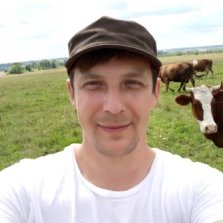Topic Menu
► Topic MenuTopic Editors


Fate and Transport of Artificial Radionuclides in Soil-Water Environment
Topic Information
Dear Colleagues,
The ease with which radionuclide moves through the environment and is taken up by plants and animals is determined by its chemical forms and site-specific environmental characteristics. The peculiarities in climate, geomorphology and radionuclide speciation in the fallout were demonstrated to lead to differences in their migration rates in the environment and rates of its natural attenuation. Wash-off from the slopes of contaminated catchments and river transport are key long-term pathways for radionuclide dispersal from contaminated areas after nuclear accidents. Studies and modeling of accidentally released radionuclide’s fate and transport in the environment serve as a basis for emergency response decision making and remediation strategy development in case of nuclear emergencies.
The aim of the Topic is to set up collection of research articles and reviews covering wide research area dealing with speciation of artificial radionuclides in the environment and its transformation, radionuclide sorption-desorption, fixation and remobilization processes in soil-water system, radionuclide wash-off from contaminated catchments to rivers and lakes, river transport to sea/ocean, radionuclide bioavailability and transfer to plants and biota, long-term dynamics of radionuclides in environmental compartments, empirical, semi-empirical and numerical modeling of artificial radionuclide’s behavior in the environment, remediation and decontamination technologies for contaminated land. Objectives of the Topic and potential content are interdisciplinary (soil science and chemistry, hydrochemistry, ecotoxicology, environmental chemistry, radioecology, hydrology, environmental modeling etc.) and in line with the scopes of Water, Toxics, Land and Environments in the field “Soil-sediment-water systems-hydro-ecological processes at multiple scales”.
Research articles and reviews will be invited for submission on the following themes: Radionuclide speciation in the environment and its transformation; Vertical and lateral migration of radionuclides in soils and sediments; Radionuclide wash-off from contaminated land to water bodies and river transport; Short-, mid- and long-term dynamics of radionuclides in the environment; The use of radionuclides as chronomarkers, including for assessment of erosion-denudation processes; Modelling of radionuclide fate and transport in the environment; Nuclear emergency response and decision making; Remediation and decontamination of contaminated land and soil-water systems.
Prof. Dr. Alexei Konoplev
Dr. Mikhail Komissarov
Topic Editors
Keywords
- soil-water system
- chernobyl
- fukushima
- nuclear power plant
- radionuclide
- speciation
- sorption
- wash-off
- erosion
- contaminated land remediation and decontamination
Participating Journals
| Journal Name | Impact Factor | CiteScore | Launched Year | First Decision (median) | APC | |
|---|---|---|---|---|---|---|

Water
|
3.4 | 5.5 | 2009 | 16.5 Days | CHF 2600 | Submit |

Toxics
|
4.6 | 3.4 | 2013 | 14.7 Days | CHF 2600 | Submit |

Land
|
3.9 | 3.7 | 2012 | 14.8 Days | CHF 2600 | Submit |

Environments
|
3.7 | 5.9 | 2014 | 23.7 Days | CHF 1800 | Submit |

MDPI Topics is cooperating with Preprints.org and has built a direct connection between MDPI journals and Preprints.org. Authors are encouraged to enjoy the benefits by posting a preprint at Preprints.org prior to publication:
- Immediately share your ideas ahead of publication and establish your research priority;
- Protect your idea from being stolen with this time-stamped preprint article;
- Enhance the exposure and impact of your research;
- Receive feedback from your peers in advance;
- Have it indexed in Web of Science (Preprint Citation Index), Google Scholar, Crossref, SHARE, PrePubMed, Scilit and Europe PMC.

